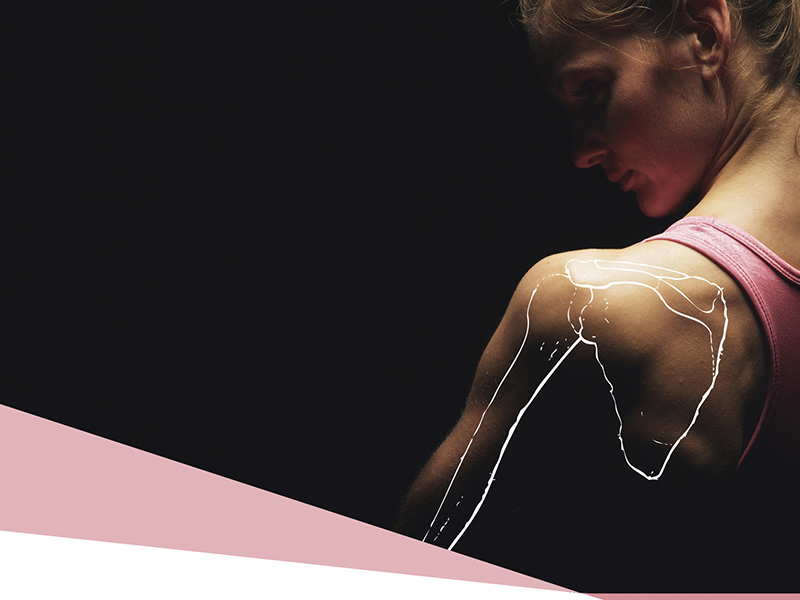It’s not uncommon for Kevin Bonner, M.D., of the Jordan-Young Institute in Virginia Beach, Virginia, to have a full conversation with someone while performing shoulder surgery. Surgery, that is, that he’s performing on them.
“Some of them really like to get the play-by-play,” Bonner says.
It’s interesting and a sign of the times, Bonner says of advancements like this that allow patients to be conscious for surgical procedures.
In the last decade, surgeons, therapists and medical implant providers have made strides and advancements in the options available for the treatment of shoulder diagnoses.
They’ve had to. Patients are seeking and requesting treatments that are minimally invasive and allow them to get back to living their active lives at work and play quickly.
It’s not been an easy evolution.
The shoulder is a complex joint that involves multiple planes of motion, several muscles including the rotator cuff and the dynamics of the scapula commonly referred to as the shoulder blade.
“It is all these moving parts that make the shoulder a challenging joint to rehabilitate,” says Brian Beaulieu, PT, MPT, OCS of Tidewater Physical Therapy and who is also the regional director of the clinic’s South Hampton Roads locations.
“Both surgical techniques and physical therapy treatment strategies have improved outcomes in the last 10 years.”
Reverse Shoulders
Think a shoulder that gets replaced has to go in just as it came out? Wrong.
For Martin Coleman, M.D., of the Orthopaedic and Spine Center in Newport News, Virginia, the biggest advancement he’s seen is in reverse shoulder replacements.
“It just wasn’t available 12 years ago,” Coleman says. “It gives us capabilities to handle cases we haven’t been able to handle before.”
A regular shoulder has a ball and socket, Coleman says. The ball is round and the socket is flat.
Sometimes that cuff doesn’t work, though, when there is a chronic tear or arthritis built up. Enter the reverse shoulder where, Coleman says, “you replace the ball with the socket and the socket with the ball. By doing that you can eliminate the need for the cuff.”
Coleman has “literally had people who have not been able to lift their arms for years finally be able to.”
“The only challenge,” Coleman says, “is that this technology is only 10 years old, so we are still looking to see the long-term effect.”
Keeping It Closed
By far, the biggest evolution Bonner has seen over the last decade is avoiding open surgery for many common shoulder problems requiring surgery.
“When I started 16 years ago, we were still doing open or doing mini-open procedures,” Bonner says. “By far, most common problems involving the shoulder now are performed arthroscopically.”
Bonner primarily focuses on sports and arthroscopic surgery and his specialty includes surgeries prior to complete joint replacements, like rotator cuff repairs.
“You can’t do a shoulder replacement arthroscopically,” Bonner says. “The reason we do it for most other problems is it’s clearly less invasive, visualization and appreciation of abnormalities is enhanced, contemporary repair techniques for even large rotator cuff tears can be done just as well if not better in my opinion. There is also certainly less pain initially.”
The biology of the tissue doesn’t heal faster from an arthroscopic procedure, Bonner says.
“If you look at the long term, the healing rates are about the same,” Bonner says. “The short-term benefits are it is less painful, which is a big deal because people want to get back to work as quickly as possible and get off pain medication.”
Recovery and Rehabilitation
Recovering from shoulder surgery is no small task, says Beaulieu.
“It can be a long road back,” Beaulieu says.
In fact, Bonner says, “The therapy is just
as important as the surgery.”
Beaulieu says they are starting to look beyond the shoulder itself and to the shoulder blade in the rehabilitative process.
“I’ve been practicing for 13 years,” Beaulieu says. “When I first began they were just starting to talk about the role of the shoulder blade and its involvement in returning normal shoulder function.”
Beaulieu maintains that a team approach is always the best option for resolving shoulder limitations. It takes proper diagnosis, consistent treatment and communication and plenty of education.
“Relieving pain is one thing but making sure it doesn’t return is the real goal.”
That involves education; learning to understand how the complex shoulder moves and making regular exercise a habit not just for overall health, but also for the health of the shoulder joint.
“Many patients say they want to be able to reduce pain to a level they can live with.” Beaulieu says. “I say why not eliminate pain and return to the lifestyle you want.”



